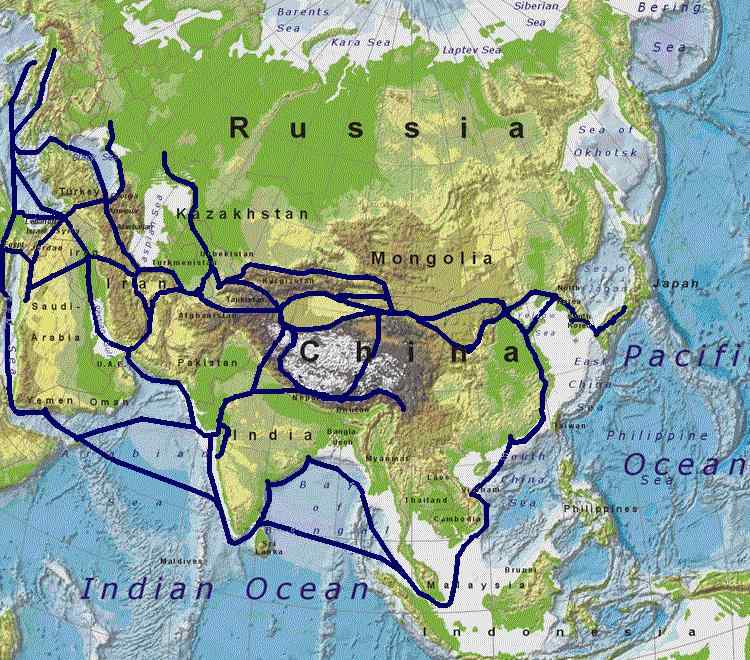The Silk Road: How Ancient Trade Routes Shaped the Modern World
The Enduring Legacy of the Silk Road: Connecting Ancient Worlds and Shaping Global Trade

Introduction to the Historic Silk Road

Discover the Silk Road, an iconic network of ancient trade routes that, for over two millennia, profoundly connected diverse civilizations. Far from a single path, this intricate web spanned more than 4,000 miles, establishing vital links between East Asia and the Mediterranean. While renowned for its most famous commodity, silk, the Silk Road facilitated much more than just commerce; it served as a crucial conduit for the exchange of ideas, religions, technologies, and cultures that ultimately reshaped human history and civilizations. This comprehensive article delves into the origins of the Silk Road, its golden age, eventual decline, and its modern resurgence through China’s Belt and Road Initiative (BRI), highlighting its persistent and global influence.
Tracing the Origins and Development of the Ancient Silk Road Trade Routes (2nd Century BCE – 14th Century CE)

The foundational pathways of the historic Silk Road were established during China’s Han Dynasty (207 BCE – 220 CE). Emperor Wu initiated its expansion by dispatching the diplomat Zhang Qian on critical missions (138–126 BCE) to forge alliances against the Xiongnu, a formidable nomadic confederation threatening China's northern frontiers. Although Zhang’s diplomatic endeavors yielded only partial success, his expeditions unveiled the immense wealth and strategic importance of Central Asia. These discoveries led to the opening of pivotal trade routes that connected China directly to powerful empires like the Parthian Empire, the Kushan Empire, and, in later centuries, the mighty Roman Empire.
Initially, the focus of this extensive network of ancient trade routes was on luxury goods. Exquisite Chinese silk, tea, and porcelain flowed westward, captivating markets, while valuable gold, silver, wool, glass, and precious stones journeyed eastward. Over time, the Silk Road expanded into multiple interconnected branches, enhancing global trade and cultural exchange:
- The Northern Route traversed the Eurasian Steppe, effectively linking China to the Black Sea region.
- The Southern Route strategically skirted the formidable Taklamakan Desert, connecting China to Persia and India.
- The Maritime Silk Road extended its reach from Southeast Asia across vast oceans to East Africa, facilitating maritime commerce.
Key trading hubs such as Samarkand, Bukhara, Kashgar, and Dunhuang flourished into vibrant, multicultural centers. These bustling cities served as vital convergence points for merchants, scholars, and missionaries from across the ancient world. The Mongol Empire (13th–14th centuries), under the leadership of Genghis Khan and Kublai Khan, played a crucial role in unifying vast sections of the Silk Road. Their reign, known as the Pax Mongolica, ensured unprecedented safety and stability across the routes, facilitating an extraordinary period of cultural and economic exchange that left an indelible mark on history.
Beyond Commerce: The Profound Exchange of Ideas, Religions, and Technologies Along the Silk Road

The Silk Road was not merely a series of trade routes; it was a powerful cultural highway that profoundly shaped global civilizations. Its most transformative impacts extended far beyond economic transactions, fostering significant exchanges in:
1. Religious Diffusion and Transformation
Buddhism originated in India and spread successfully to China (via Central Asia) during the Han Dynasty, subsequently influencing the cultures and spiritual landscapes of Korea and Japan.
Nestorian Christianity reached China by the 7th century, gaining a foothold among various communities, while Manichaeism and Zoroastrianism also found adherents and established communities along these diverse routes.
Islam expanded rapidly eastward after the 8th century, primarily through the dedicated efforts of Persian and Arab traders. This expansion significantly shaped Central Asian and Chinese Muslim communities, including the distinct Uyghurs.
2. Technological and Scientific Transfers
The revolutionary invention of papermaking in China (dating back to the 2nd century CE) traveled westward along the Silk Road, reaching the Islamic world by the 8th century and eventually arriving in Europe by the 12th century. This transfer fundamentally revolutionized record-keeping, literacy, and the dissemination of knowledge across continents.
